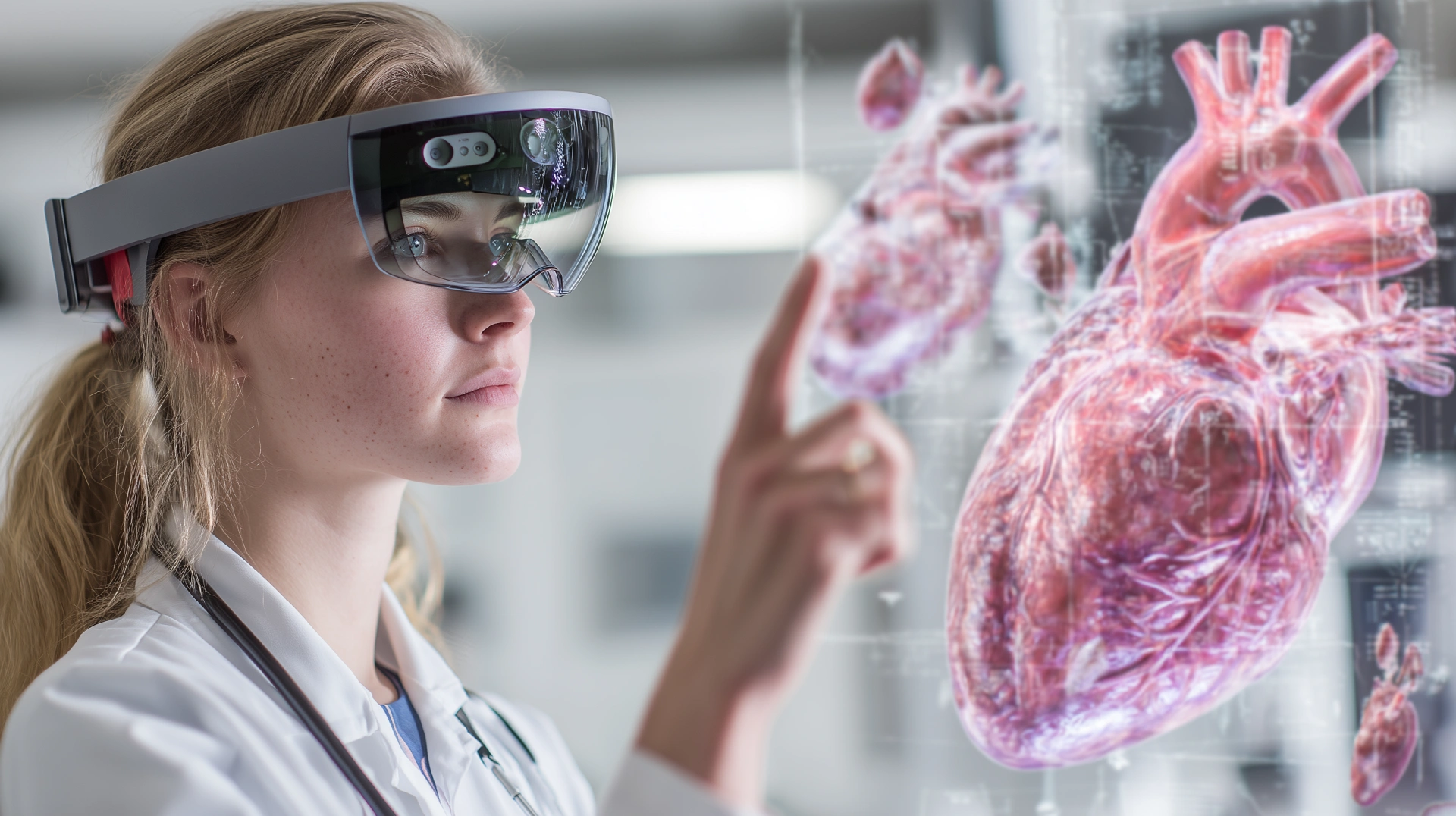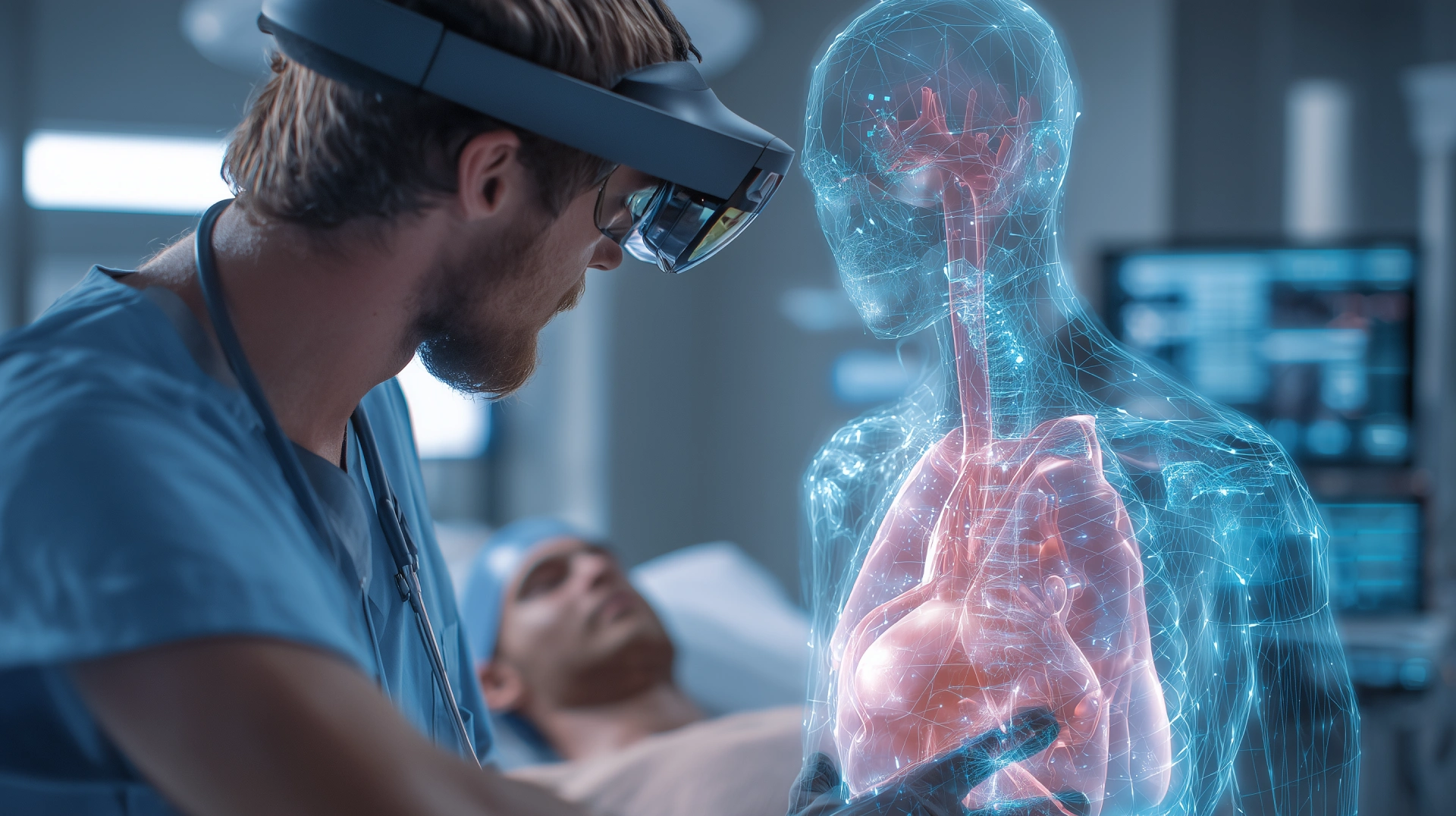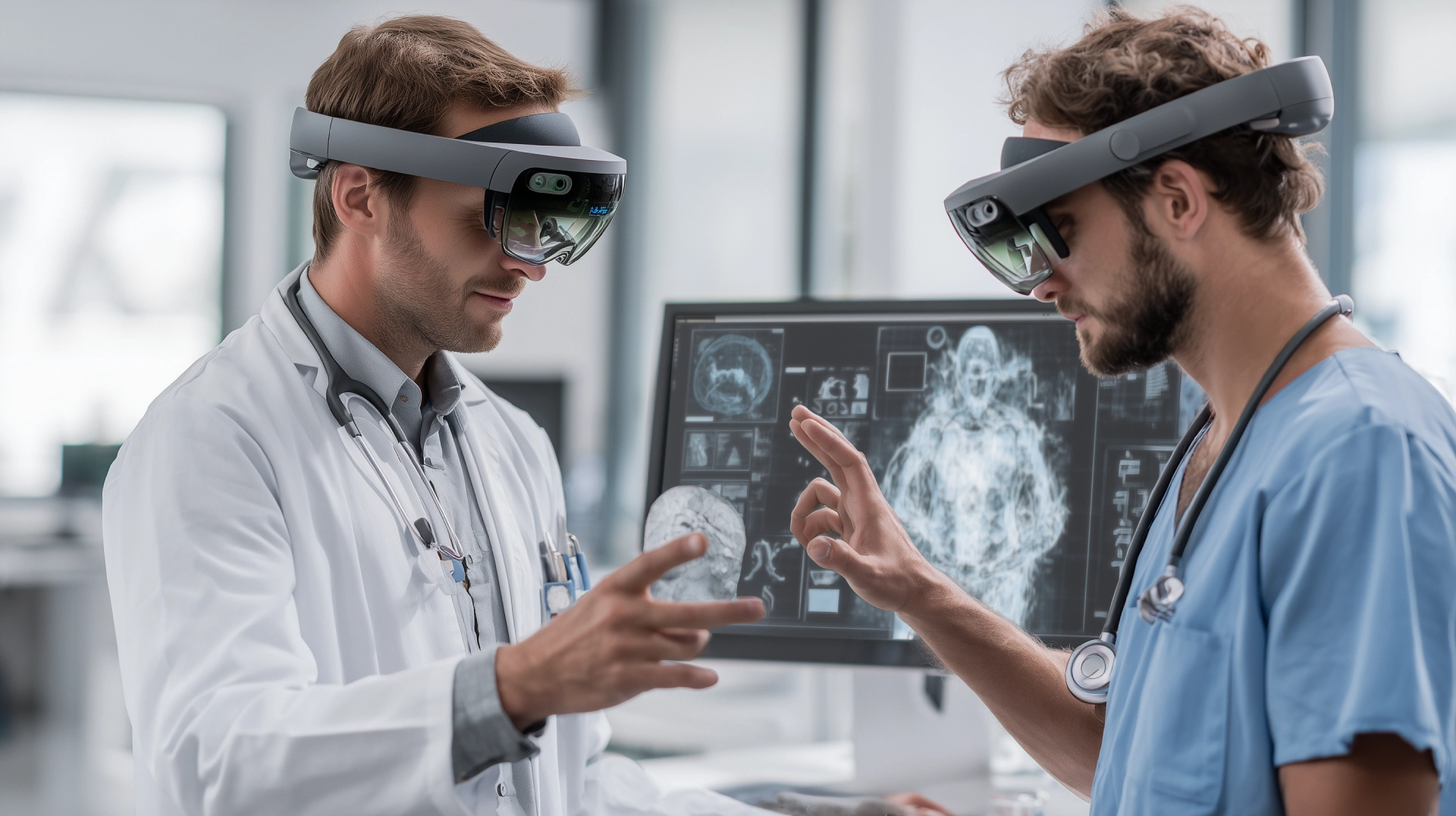Mixed Reality (MR) is revolutionizing the medical sector by allowing healthcare professionals to interact with digital elements superimposed on the real world, integrating clinical information into their field of vision and manipulating 3D models with precision.
Thanks to devices such as HoloLens and medical visualization platforms, it is now possible to train, diagnose, plan, and treat with a level of detail never seen before. At DeuSens, we develop Mixed Reality solutions for medicine that enhance safety, efficacy, and understanding throughout the clinical process.
Benefits of Mixed Reality in Medicine
Incorporating Mixed Reality into medical and training environments offers key advantages:
- Practical and immersive medical training without real risk.
- 3D anatomical visualization on the patient's body.
- Precise surgical planning with interactive models.
- Remote assistance with real-time collaboration on the operating field.
- Reduction of errors and improvement in clinical decision-making.
- Increased empathy and understanding of the patient through visual experiences.
START TODAY! Contact us for a free demonstration of how Mixed Reality can transform surgical procedures.
Contact us
Practical applications of Mixed Reality in medicine
Real-life cases in which Mixed Reality is already adding value in the healthcare sector:
- Surgical and anatomy training with simulations on the real body.
- Interactive visual guides for medical procedures or nursing processes.
- Surgical support with 3D models projected during the procedure.
- Advanced telemedicine with remote assistance in the operating room or consultation room.
- Augmented exploration of organs or lesions through superimposed models.
- Visual presentation of treatments or diagnoses to the patient.
SUCCESS STORY: Discover how to integrate Mixed Reality devices in hospitals and clinics.
Consult us now
Technologies and tools used
At DeuSens, we apply cutting-edge technology to every medical solution:
- Microsoft HoloLens 2 and precision spatial tracking systems.
- Unity and MRTK (Mixed Reality Toolkit) for customized environments.
- Visualization of DICOM models and 3D-processed anatomical data.
- Integration with hospital systems and existing medical software.
- Voice, gesture, or gaze control interfaces for contactless operation.
EQUIPMENT AND SOFTWARE: Contact us to find out about the best technological options tailored to your needs.
More info
The Future of Mixed Reality in Healthcare
The future of medicine is visual, contextual, and intelligent. With Mixed Reality, clinical information is not only seen, it is experienced: it adapts to the space, the patient, and the procedure. As these technologies are integrated with AI, medical imaging, and connected devices, medicine will become more accurate, personalized, and accessible.
MR will reduce errors, improve times, empower professionals, and humanize the doctor-patient relationship.
GET READY FOR THE FUTURE: Stay ahead of the curve with our Mixed Reality solutions applied to medicine.
Contact us for more details
Frequently asked questions:
What is the difference between augmented reality and mixed reality in medicine?
Mixed Reality allows users to actively interact with 3D models anchored to the real environment, while Augmented Reality only superimposes them without advanced spatial interaction. In addition, when used with glasses, Mixed Reality allows users to have their hands free and, in the case of surgery, for example, to interact effectively with real and virtual objects.
Is it only useful for surgery?
No. It is also used in training, diagnosis, rehabilitation, physical therapy, simulations, clinical consultation, and nursing.
What devices are used?
Mainly glasses with specific hardware such as HoloLens 2, Apple Vision Pro, or Meta Quest 3, among others. These glasses, being standalone, allow the user to use them independently, providing greater comfort and freedom of movement during use.
Can it be connected to real medical images?
Yes. We can work with DICOM data, 3D scans, or anatomical reconstructions for advanced visualization and planning.
Is it safe and applicable in real-world environments?
Absolutely. The solutions are designed to adapt to the clinical workflow without hindering the procedure and in compliance with medical safety standards.
Conclusion:
Mixed Reality is marking a turning point in the way medical professionals learn, communicate, and make decisions. It's not just about technology: it's about giving more tools to those who save lives.
ACT NOW: Request a personalized demo and discover how Mixed Reality can help in medical processes across multiple fields.
Contact us for a free consultation









 RETURN
RETURN







